- English TOP>
- Mozu-Furu Q&A>
- Mozu-Furu Q&A Vol.03

-
We think they lived in buildings like the one shown on the right, called "tateana-jukyo" (pit dwellings). These were made by digging a hollow in the ground and placing a number of posts inside it, then covering the roof with plants and other material. Pit dwellings had been very common ever since the Jomon and Yayoi Periods, and were still used during the Kofun Period.
Another type of building, called a "takayuka-soko" (raised-floor granary), was used as a storeroom for preserving grains (like rice and wheat). The purpose of raising the floors above ground level was to protect the grains from humidity, rodents and other hazards.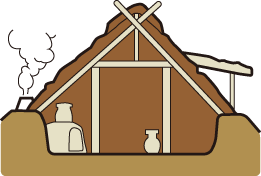 Inside a pit dwelling
Inside a pit dwelling
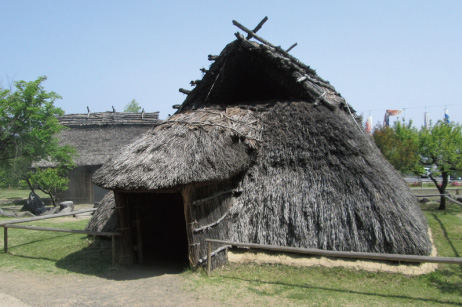 A reconstructed pit dwelling (Shinano-no-Sato Rekishi Koen, Chikuma, Nagano Prefecture)
A reconstructed pit dwelling (Shinano-no-Sato Rekishi Koen, Chikuma, Nagano Prefecture)
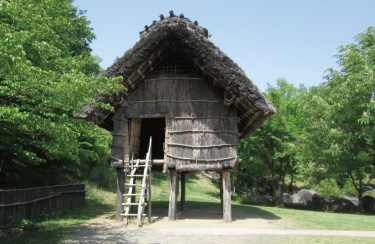 A reconstructed raised-floor granary (same as above)
A reconstructed raised-floor granary (same as above)

- Some artefacts made in the Kofun Period were modeled on the shape of houses. Take the bronze mirror on the right, for example. It is decorated with pictures of four buildings. We think these show where the local elite lived .
The building marked (A) in the picture below is thought to be a tateana-jukyo (pit dwelling), where the local elite would have lived. Building (B) looks like a takayuka soko (raised-floor granary) for storing grain, etc.
Building (C) is probably for worshipping deities and ancestors, and (D) for conducting the affairs of administrative work.
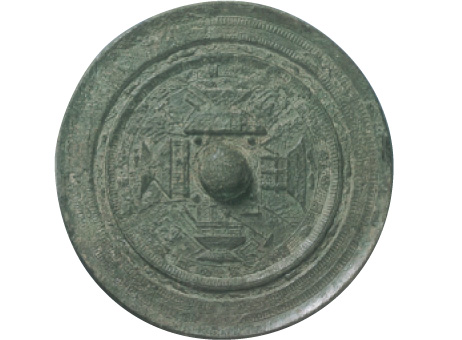 "Kaokumon-kyo", a bronze mirror showing buildings from the Kofun Period (excavated from the Samida Takarazuka Kofun in Nara Prefecture)
"Kaokumon-kyo", a bronze mirror showing buildings from the Kofun Period (excavated from the Samida Takarazuka Kofun in Nara Prefecture)
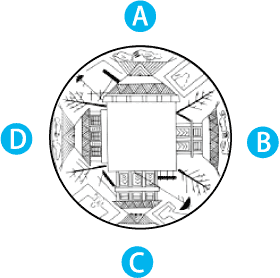 Reproduced from "Yayoi Architecture (Yayoi Kenchiku)", a Spring 2009
Reproduced from "Yayoi Architecture (Yayoi Kenchiku)", a Spring 2009Special Exhibition at the Osaka Prefectural Museum of Yayoi Culture










